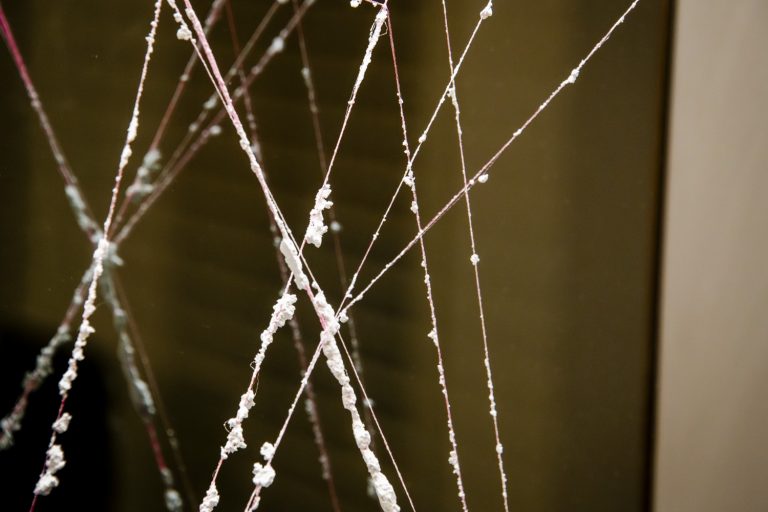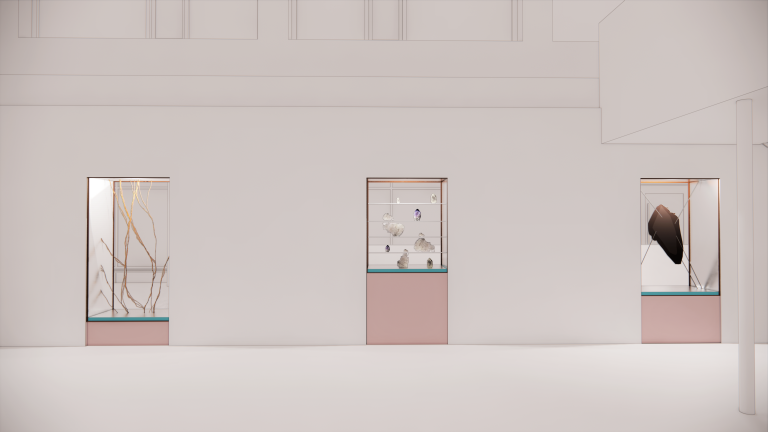Hanna Ljungh’s Curiosity Cabinets: Medicinareberget consists of a free-standing monumental salt stone cabinet and five smaller cabinets with minerals that is integrated into the walls of the building Natrium. Ljungh has been inspired by the campus site Medicinareberget. In the artwork, she uses minerals that are found in the human body and which are also extracted from the earth to build our societies.


























By using the curiosity cabinet as a concept, Hanna Ljungh brings our thoughts back to a pre-scientific worldview where the world was not as divided into facts and imagination, science and magic. With an approach rooted in fact, she wants to show our affinity with what we perceive as non-human and in many cases as non-living, and to grasp the unexpected connections.
In Curiosity Cabinets: Medicinareberget, Hanna Ljungh has taken as a starting point the number of people (about 3600) who works in the building Natrium and the amount of certain minerals and elements present in their bodies. These minerals link us humans to other species and materials, food chains, geopolitical contexts and histories.
The large salt cabinet Curiosity Cabinet (Salt / Sodium 360 kg): Shifting Continents is a self-forming sculpture in continuous transformation. From the beginning it consists of a 360 kilo heavy salt stone. Every day, freshwater drips onto the stone, slowly dissolving it. In this way a saturated saline solution is formed. From the saline solution, a number of threads stretch upwards, allowing salt crystals to slowly form for about 30 to 40 years. The artwork will be a slow experiment that relates to the building’s knowledge and research activities in constant change.
The smaller built-in cabinets also consist of the same amount of minerals as the people in the Natrium building. The minerals are iron, silicon, copper, gold and lithium. They are essential building blocks in our bodies but are likewise fundamental materials in the global economy, shaping our ideas about society and the future. With these cabinets, the artist poses questions about these substances and how our views and our use of them may change over time.
Artist bio Hanna Ljungh
Hanna Ljungh (b. 1974) works with film, photography, sculpture and installation. She lives and works in Stockholm. Ljungh has a degree from Parsons School of Design, New York and Konstfack, Stockholm. Her work has been shown at: Kunsthall Trondheim; Kristianstads Konsthall; Studio Hippolyte and HIAP, Helsinki; Swedish Cultural Institute, Paris; Kumho Museum of Art, Seoul; Moderna Museet, Malmö. Her work is included in several public and private collections.
Collaboration between Public Art Agency Sweden and Akademiska Hus
The art programme at Natrium, Gothenburg University, is part of an in-depth collaboration between Public Art Agency Sweden and Akademiska Hus aiming to make the campus area attractive in a new way.


